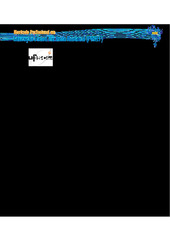Práticas corporais no meio líquido nas aulas de Educação Física escolar
Resumen
Proposals centered on the body culture of movement within the context of school Physical Education encourage a look at the different possibilities of movement by the student and the opportunity to contemplate as many experiences as possible. Reassessing the learning objects and presenting a new thematic unit called Corporal practices in the liquid environment as a common curricular proposal, presents possibilities of access to a cultural heritage of undeniable value in the liquid environment for personal safety, enjoyment of leisure and unique learning. The main characteristic of the thematic unit of Corporal practices in the liquid environment is to break with the traditionalist concept of knowing how to swim, related to the four styles of swimming, which interfered in limiting the potential of the liquid environment, and guarantee the citizen's right to experience, enjoy, appreciate and create, proposing new perspectives on the selection of content for school Physical Education classes. In this way, the objective of the study is to analyze the development of body practices in the liquid environment as a curricular content of Physical Education at school for students in the early years of elementary school. The specific objectives are: (a) to highlight the possibilities of teaching the thematic unit of bodily practices in the liquid environment in Physical Education classes at school; (b) to analyze the development of the didactic unit of corporal practices in the liquid environment in the School Physical Education classes and (c) to identify the influences of the didactic unit realization on the students' learning. 30 students enrolled in the 3rd year of elementary school participated in the study. The foreseen procedures included: a) elaboration of a didactic unit of 14 classes, within the proposed thematic unit of Corporal practices in the liquid environment; b) application of the didactic unit in Physical Education classes at school and c) collection techniques used in the research. The instruments used were: systematized and filmed conversation circles and a logbook. The results showed that the didactic unit presented a diversified cultural collection and provided students with motor, cognitive, social and personal safety learning, relating learning to the eight dimensions of knowledge, and demonstrating that it was possible to enhance freedom of action in the liquid environment and provide sensations of pleasure that inferred in the enjoyment of leisure by the student. In this way, we hope to have contributed to the subject being addressed more frequently and that, in a future reformulation of the National Common Curricular Base, body practices in the liquid environment can be thought of no longer as a suggestion, but as a basic learning knowledge. through a new thematic unit.
Colecciones
El ítem tiene asociados los siguientes ficheros de licencia:

